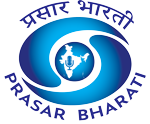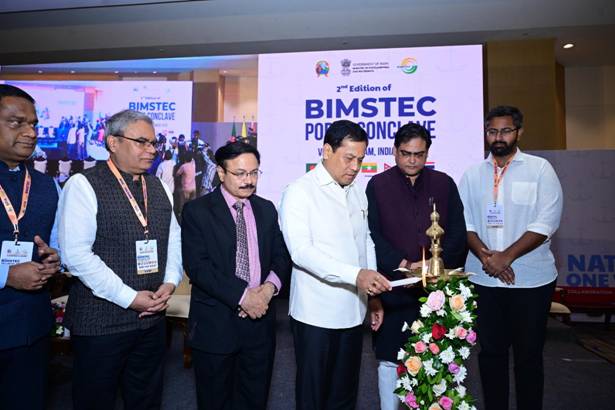Union Minister of Ports, Shipping and Waterways, Sarbananda Sonowal on Monday inaugurated the second edition of the BIMSTEC Ports Conclave in Visakhapatnam, outlining a bold and collaborative vision to transform the Bay of Bengal into a vibrant hub of global trade, cruise tourism, and sustainable development.
The two-day conclave, attended by representatives from all seven BIMSTEC nations—Bangladesh, Bhutan, India, Myanmar, Nepal, Sri Lanka, and Thailand—brought together policymakers, port authorities, maritime experts, private stakeholders, and academics to chart a shared maritime future for the region.
Sonowal described the BIMSTEC Ports Conclave as a “springboard” for unlocking the potential of the Blue Economy. He emphasized that under Prime Minister Narendra Modi’s “Neighbourhood First” policy, BIMSTEC nations are key partners in driving regional prosperity. He called for deeper collaboration in port-led industrialisation, digital integration, and skill development, aiming to create a seamless and efficient port network that can act as an engine of growth for the entire region.
The conclave builds upon the momentum of the first BIMSTEC Ports Conclave and aims to operationalise the BIMSTEC Agreement on Maritime Transport Cooperation (AMTC), which India was the first to ratify. Sonowal urged all member states to expedite its ratification and implementation.
A major announcement at the event was the establishment of a BIMSTEC Sustainable Maritime Transport Centre in Powai, Mumbai. This centre, to be set up under the Indian Ocean Centre of Excellence for Sustainable Maritime Transport (IOCE-SMarT), will be key to operationalising the AMTC agreement. Sonowal noted that the centre will drive harmonisation of maritime policies, promote green and digital transformations, reduce trade costs, and strengthen maritime skill development across the region.
The conclave featured two major sessions that shaped the roadmap for BIMSTEC’s maritime future. The first session focused on increasing private sector participation and public-private partnerships (PPPs) to modernize port infrastructure and improve regional coordination. It also proposed the creation of a regional PPP facilitation platform and the harmonisation of port-related laws.
The second session explored the region’s potential in capturing new manufacturing opportunities created by shifting global supply chains. Discussions included establishing hubs in shipbuilding, electronics, logistics, and renewable energy sectors. Both sessions highlighted the importance of coordinated strategies, improved regional connectivity, and policy reforms in positioning the Bay of Bengal as a resilient trade and industry corridor.
Union Minister of State for Ports, Shipping and Waterways, Shantanu Thakur, also addressed the conclave. He highlighted India’s leadership in promoting seamless regional connectivity through harmonised maritime transport policies, digital logistics platforms, private investment, and a strong emphasis on skill development and green innovation.
Conclave discussions focused on operationalising the AMTC agreement, streamlining customs and logistics, and expanding cruise tourism through PPP models and joint branding strategies. Delegates proposed initiatives such as port-linked industrial zones, a regional Port Community System, multimodal logistics parks, and the development of Special Economic Zones (SEZs) to improve hinterland connectivity. Emphasis was also placed on cross-border training programmes, industry-academia collaboration, and innovation in green shipping as essential components for the region’s sustainable future.
Speaking about the strategic Kaladan Multi-Modal Transit Transport Project, Sonowal highlighted its role as a transformative initiative connecting India’s Northeast to the Bay of Bengal. He said that under the Act East Policy, Kaladan serves not only as a bilateral initiative with Myanmar but also as a model for regional integration under BIMSTEC. The project, he added, has the potential to significantly reduce trade costs, improve transit efficiency, and open new economic opportunities for India’s Northeast while fostering closer ties with neighbouring countries.














